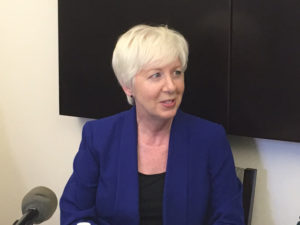 By Steve Brawner
By Steve Brawner
© 2017 by Steve Brawner Communications, Inc.
Your state taxes were cut by $100 million in 2015 and about half that much this year. In 2019, Gov. Asa Hutchinson and state legislators intend to cut them again.
But with state budgets growing tighter, “How?” is a more important question than “How much?”
To answer both questions, and others, legislators during this past session created a task force that will study the state’s tax code before producing proposed legislation by September 2018, 16 months from now.
The Tax Reform and Relief Legislative Task Force met for the first time Monday and elected two level-headed and practical-minded co-chairmen, Rep. Lane Jean, R-Magnolia, and Sen. Jim Hendren, R-Gravette. Jean is co-chairman of the Joint Budget Committee, while Hendren, Hutchinson’s nephew, has co-chaired two other task forces, one for school employees’ health insurance and one for health care.
Hutchinson likes to use these task forces to form a consensus on tough issues, to create a forum for discussion, or, if nothing else, to buy time. So far, they’ve mostly resulted in the policies he wants or, in the case of highway funding, provided a convenient back burner on which to place subjects he’d rather address later. They tend to lead to considered, incremental change so that radical legislation doesn’t slip through during legislative sessions, when things happen fast and can get crazy. Looking back, he might wish he’d created one for guns on college campuses.
The tax cuts enacted so far have benefited mostly the middle class (in 2015) and lower-income Arkansans (in 2017), so some legislators believe it’s time to help out Arkansans earning $75,000 a year or more in taxable income.
But simply cutting taxes will be difficult in an era of tight budgets. Hutchinson in April cut spending by more than $100 million over the next two years because sales and corporate income taxes aren’t meeting projections. These were not devastating cuts because they occurred in the so-called “category B” funding, which is the kind agencies know beforehand may not be available. But the timing, occurring after the latest tax cuts, was a little concerning.
There’s fat in any government budget, of course, and state government is no exception, but certain expenses are hard if not impossible to cut. Health care costs rise regardless of what the state does. The state is locked into always providing at least a token increase in public school funding lest it be sued again for failing to follow its own Constitution. Those highways don’t fix or build themselves.
So while legislators certainly will want to cut taxes, they’ll be spending a lot of time on tax reform – making the tax code simpler and more competitive with neighboring states such as Texas, which doesn’t have an income tax.
The only way to cut taxes much without blowing a hole in the budget is by ending some of the deductions that litter the tax code, but those politics will be challenging. Sitting in those committee meetings will be lobbyists whose clients benefit from those deductions. They will make persuasive cases through logical arguments and through past and future campaign donations. And when their clients’ members are mobilized and vocal – for example, all the farmers in a legislator’s district – they can be hard to vote against.
Meanwhile, legislators will seek to avoid the experiences of Kansas. Five years ago, Gov. Sam Brownback slashed taxes but not enough spending, saying that the resulting economic growth would create sufficient new revenues, because money grows on trees. Those revenues didn’t materialize, the state has been a mess ever since, and now legislators there are arguing about what to do about a huge budget deficit.
Brownback called his tax cut plan in Kansas an “experiment.” Arkansas’ tax task force has 16 months to apply the lessons learned – hopefully, by answering first “how” before considering “how much.”
Steve Brawner is an independent journalist in Arkansas. Email him at brawnersteve@mac.com. Follow him on Twitter at @stevebrawner.

